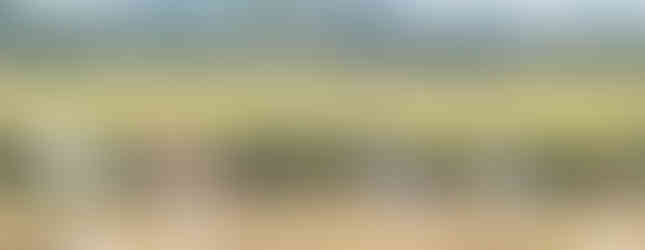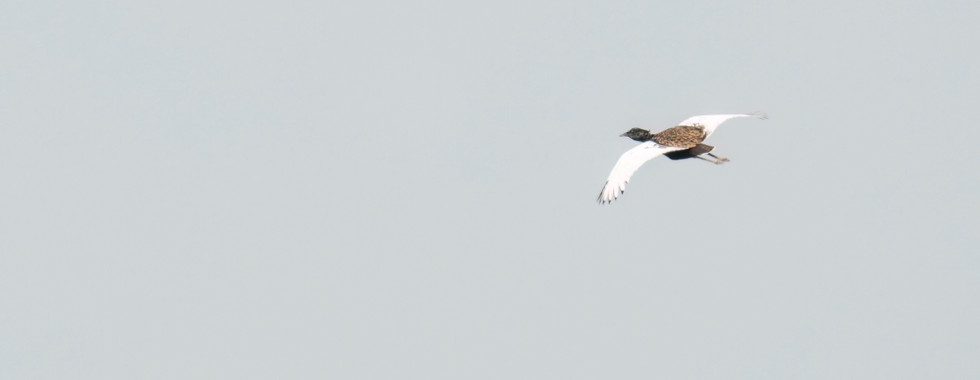It's a Wild Life! - Journey vs. Destination?!
- Romy Jansen

- Jul 11, 2024
- 8 min read
Updated: Apr 24
You often hear: It's all about the journey, not about the destination. Well, for us, it's often a bit different! We know exactly what we want to see, and how we get there doesn't always really matter. Sure, we like soaking in the local life during our travel days, but when it comes down to it, we're laser-focused on spotting that specific bird or encountering that amazing primate. In those moments, all that truly matters is reaching our destination.
After many hours in different Laotian buses (two full days in total) we finally reached the destination of that leg of the trip; the Kingdom of Cambodia. Our first stop was Kratie. From here, we would go to the Mekong River to find the beautiful Irrawaddy Dolphins and the Mekong Wagtail. To get there, we could go by tuk-tuk or rent a motorbike. We chose the latter because we love to be on our own and be flexible in how long we can stay instead of a fixed meeting time. It was our first time renting a motorbike this trip -Rob rode a motorbike before in India-, and it was nice to practice driving in Asian traffic on more rural roads, because we knew we would rent motorbikes more often in big cities later on as well. Seeing the endangered species of Irrawaddy Dolphin was wonderful! We feel blessed to see all those rare species, but at the same time feel so sad that many of them might go (locally) extinct in the near future.

After Kratie, it was time to step into the ancient world of Angkor Wat. This time we rented two mountain bikes. After more than 2 years of not even touching a bicycle -unbelievable for a real Dutchie-, we felt like little kids riding their new bike for the first time. We enjoyed the nice weather and seeing different temples. And of course, there are also birds around well-preserved places. Some temples with many bats added to the Tomb Raider vibe that some temples had. We enjoyed our day and finished the sunny day with a swim in the pool, dinner at an Indian restaurant, and a relaxing massage after all those kilometers of cycling 😅.
The national bird of Cambodia is the Giant Ibis. To catch sight of this bird, one must join a bird tour. Typically, we skip such excursions, saving them for another holiday. However, on this occasion, we made an exception as they can only be reliably found certain months of the year (the exact time we were there). Early in the morning, they picked us up in a fancy 4WD vehicle from our hotel to head to a grassland area in search of the Bengal Florican, Sarus Crane, and other interesting species. We appreciated guides taking care of us with a nice breakfast and hot coffee as we watched the sun rise over the grasslands. After a successful morning at the natural grasslands, we drove to the area for the Giant Ibis. We had heard stories of people crawling through bushes before dawn and only catching a glimpse of this rare bird. Prepared for the worst, we were pleasantly surprised to arrive at a nest location with a little hide built for observation. It was wonderful to see this majestic bird flying around and perched atop a dead tree.
In the capital of Cambodia, Phnom Penh, it was time to confront the harrowing history of the country. First, we rode our rented motorbike to the Killing Fields. As we walked through the site, a Dutch voice in our ears described the terrible events that took place there. After this audio tour, we were deeply moved and silent... It was truly impactful. Additionally, we visited the Museum to further understand the country's history. Not a fun activity to do in Cambodia, but definitely an experience not to be missed if you want to learn about the history that took place.
After hearing all the sad stories, we were excited about the idea of visiting an island to see bioluminescent plankton at night and to snorkel during the day. On the first night, we were eager to try it out since it was almost new moon, creating ideal dark conditions for viewing the plankton. Besides, we had previously witnessed this awesome phenomenon in the Netherlands. As we walked along the shoreline, we hoped to see the blue glow of the plankton, but only a few blue sparkles appeared. We attempted to find a darker spot away from the lights on the beach and even took a swim, but it wasn't as spectacular as we had hoped. The next day, we asked the hotel owner if there was a time when the lights dimmed during the night. He confirmed that after 23:00, it would be mostly dark, but we would need to swim and move the water to see the plankton better. Since we spent the entire day snorkeling and enjoying the sea, we went to bed early and set an alarm for midnight to ensure it was completely dark before our night swim. Although not as impressive as we had hoped for, swimming at night and witnessing the plankton was truly magical!
The next destination we could reach overland from Cambodia was Vietnam. Vietnam has some beautiful national parks, and Cat Tien is one of them. You might expect that the wildlife in the national park is protected and therefore easy to spot. Unfortunately, that isn't really the case. Due to hunting -which still happens to a certain degree-, monkeys run and hide when they see you. As we like having a goal, we took on the challenge of seeing all the monkey species that occur in the park (it's all about the destination for us right?!).
The river between the park and the town can only crossed with a ferry. The night before we went into the park, we stayed in a hostel in town and had some nice dinner; noodles with vegetables and tofu. For breakfast, we even had pancakes. As Dutchies, we love pancakes, and these ones were pretty good :) As the ferry runs at certain hours, we slept in a room inside the NP on the other side of the river. We rented two bicycles to move around quickly, as distances between the various locations were quite far. We spent all our time searching for primates during the day; we were often already gone at 05:00 and searched at least until 11:00. In the afternoon, we searched from 14.30 to 18.00, after which we continued spotlighting on the bicycles until after 22.00 or later. Yes, we looked like zombies after 7 days, but it was totally worth it! We got to see 6 primate species, and saw more than 20 different mammal species in total 😍.
Food in the park was twice as expensive as outside the park, and we are on a budget (and Dutch after all). So when it was too hot to search for animals, Romy took the local ferry to get food from the accommodation on the other side of the river and brought it back. So we looked like zombies after 7 days of searching, but at least we had loads of delicious noodle- and pancake meals 😅

In South America, we were fortunate to have our car, Forrest, which allowed us the freedom to explore any destination we desired. In Thailand and Laos, we rented a car, which was also very pleasant. However, in Cambodia and Vietnam, tourists can't rent a car. This sometimes made reaching our destinations a bit more difficult because birds aren't always in the easiest reachable places. Besides, primates start calling early in the morning, while the bus driver is still in his 'comfortable' bed (in Southeast Asia, all the mattresses were made from stone). So we ended up traveling by bus between places. When there was a local bus, we chose that one to keep the costs low, but you'll remember the bus breaking down in Laos. That was also included in the low price ;) Otherwise, we took trains when possible in Vietnam. Then we had two tickets for two lower beds in a cabin with four beds. These were mostly pretty okay, only not when someone else slept in our lower bed. From the bus or train station, we took a Grab (the Asian equivalent of Uber) to our hotel or walked with our total of 30kg of luggage on our backs. At a certain place, we usually stayed for a few nights and rented a motorbike for €3-5 per day. A really cheap way to be flexible and go to the birding sites early in the morning. We even did some spotlighting from the motorbike. Rob drove then slowly with his headlamp on his head, and I sat behind him with the Lahoux thermal scope to search for mammals in the trees. A really funny experience, and we encountered some fascinating species along the way. In the end, we drove hundreds of kilometers on different kinds of motorbikes: automatic or manual. We gained a lot of driving experience and even considered buying one back in the Netherlands ;)
We spent almost two months in Vietnam, exploring the country by train, bus, motorbike, car, boat and bicycle. However, to be honest, Vietnam was the country we liked the least among all the countries we've visited so far. To give you an idea why: within our first five minutes in Vietnam, we were greeted with the sight of beautiful, rare birds in small cages at the border. Rob couldn't resist opening one of the cage doors, but before the little bird could fly out, its angry owner intervened and Rob was already in his first fight in Vietnam within 5 minutes of entering the country. The next day, we encountered many little squirrels being sold at a local market. Throughout our stay, we noticed numerous birds kept in cages, and we learned that some species are legally traded (according to Vietnamese law), making it challenging to address the issue. A local explained that bird contests are popular in Vietnam, where the most melodious singers and graceful dancers win valuable prizes, sometimes even cars. Some bird species that were still quite easy to see in Vietnam when Rob prepared for the trip a few years back are now scarce and one almost extinct due to locals catching them for cage bird trade. During the COVID-19 pandemic, this problem increased due to the absence of tourists and reduced ranger protection. In the forests, we stumbled upon mist nets filled with dead birds and abandoned cages, leaving us feeling really sad. In addition to these encounters, we had some unpleasant experiences with locals, such as the one time they killed a snake (to take it with them and eat it) shortly after Rob rescued it from a busy city road, while I directed traffic to clear the lane.
Fortunately, amidst these challenges, we encountered kind-hearted people and shared delightful meals with some of them. In total, we observed 11 new primate species in Vietnam, with the highlight being the Red-shanked Douc Langur, one of the most stunning primate species in our opinion.
You might be wondering if we'd ever return to Vietnam. Surprisingly, we would say yes. There are still primates and bird species in the far north that we haven't explored. However, for now, we look forward to our next stay in Malaysia to visit one of the most biodiverse places on Earth. Our next destination: Borneo ❤️.







































Comments